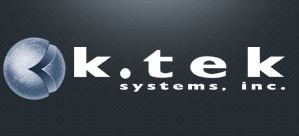Banner Results Depend Upon Web Ad Content
From the February 21, 2000 print edition
Melissa Diehl - Staff Writer
Banners have become one of the most popular methods of driving customers to a Web site. Banner advertising currently consumes the lion's share of advertising budgets for online marketing purposes.
The banner -- a flashy, eye-catching advertisement -- usually appears at the top and/or bottom of most Web sites.
Sometimes the same banner appears on a site. Other sites rotate banners.
Payment for banner advertising varies. One form is on a "per-impression basis." This form is sold on a cost-per-thousand basis, or CPM. An impression is a single viewing of a given banner on a Web site. Currently you can expect to spend anywhere from $5 to $50 CPM depending upon the site's visibility and the level of targeting a banner may require.
You'll need that targeting if your business serves a niche market where only a small percentage of potential visitors to a site might have interest in your product or service. The greater the mass appeal of your product or service, the lower cost you'll find in the marketplace for purchasing banner ads on a CPM basis.
But a better way to purchase banner advertising is on the "click-through" plan. With this, you pay only if a visitor clicks on the banner to enter your site.
You can determine up front the exact cost of every new visitor, whereas with impression purchasing it's a gamble. A typical banner will earn between 1 percent and 2 percent "click-through" response.
If you were to purchase 10,000 impressions at $15 per thousand, you would pay $150 and at a 1 percent click-through you would receive 100 new visitors for $1.50 each. At 2 percent, which is pretty good, your cost is only 75 cents per visitor. Whenever possible, make sure you purchase click-throughs and not impressions. They provide a better bang for your buck.
How do these numbers compare to the cost of traditional (offline) marketing campaigns?
With traditional marketing, it can usually cost about $2 to $3 just to get a lead interested in a product or service. Some mediums, such as radio or television, can cost $10 to $40 per sale.
The Internet represents an inexpensive medium to integrate into an overall campaign in order to attract customers to products or service at prices -- and at a cost not available in traditional (offline) mediums.
Also, you can develop a banner and test its effectiveness within 24 hours. Based on the results, you can change the price, change the product or service or change the banner and test again within a day.
With traditional marketing strategies, it requires days and sometimes weeks to have an ad appear and run its course, and to track results.
The Internet is a marketer's dream come true.
When creating banners, use bright colors such as blue, green, yellow or orange. Red and black results seem less effective.
Animated banners offer multiple advantages over single-screen banners. They allow more copy and tend to grab the user's attention.
Make sure the copy is compelling and inviting enough to make the user interested in learning more. It's critical that your banner screams "LOOK AT ME, CLICK ME!" Focus on your site's finest benefit.
Banner size should be kept at 15K to 20K, which is ideal if you can accomplish your copy and creative goals within it. Never use more than 20K, because it will take much longer to load, and you run the risk of the user not seeing your banner at all.
And the No. 1 bait in copy is using the word "free."
Get your creative juices flowing and think of something you can offer free such as a subscription to your online newsletter, a drawing for a prize, a trial offer or a download.
Make sure you use the words "click here" for the freebie, and never assume that the user knows that.
If you require niche, local or regional exposure, targeting is critical to the success of your banner-ad campaign.
Exercise caution when choosing sites. Select a site that offers the opportunity to reach the prospects most likely interested in your product or service.
Purchasing targeted impressions does cost more, but it produces the best results. It reaches your audience.
If you are an online grocery in Tarpon Springs that sells and delivers in a limited area, it wouldn't make any sense to place your banner on a national network. You'd be better off targeting community sites including those of local newspapers and the chambers of commerce.
Once you've perfected your banner, keep testing. Create other banners. Testing is an ongoing process.
Review your site statistics daily. Make sure you make the appropriate changes when your traffic slows.
Remember that copy, color and graphics represent the most significant elements of your banner. You can produce steady traffic by constantly modifying and testing these elements.
Melissa T. Diehl is sales and marketing manager for K.Tek Systems Inc., an Internet technology company in Palm Harbor.
Spotlight On K.Tek
Press Contacts
- K.Tek Media
Media@ktek.com
(727) 726-1700
Find us on Facebook
Connect with K.Tek!
Email:info@ktek.com
Contact us
Telephone: 727.726.1700
Email: info@ktek.com
Address: 2454 McMullen Booth Rd Suite 700, Clearwater, Florida 33759
